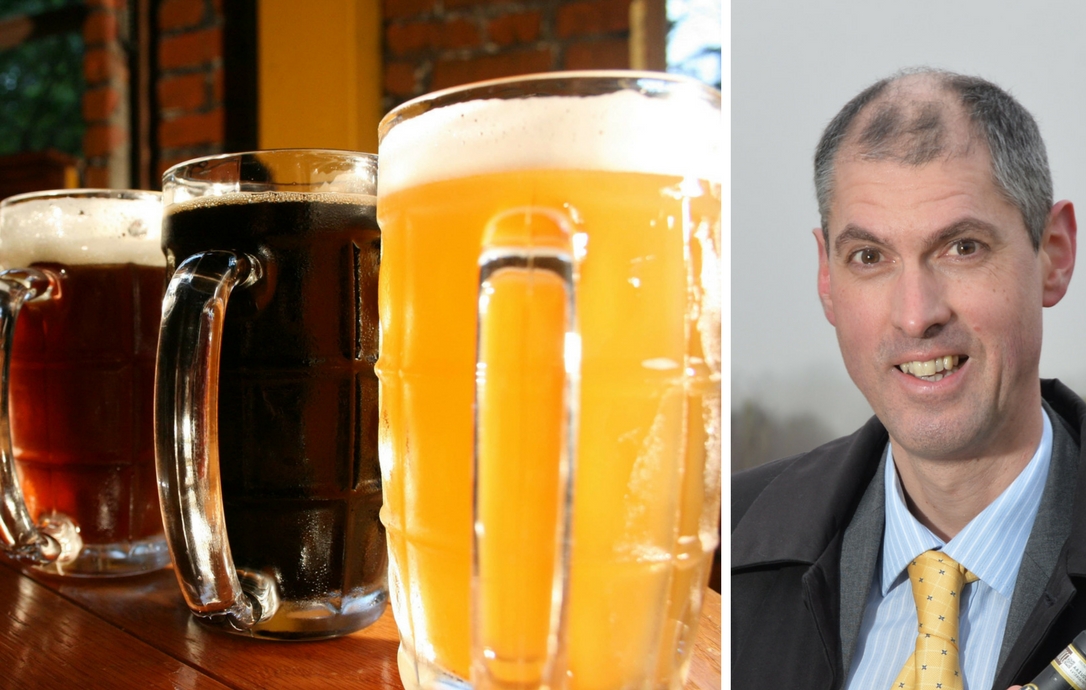Our beer man says Northants is in the middle of a brewing boom
Date 23.05.2017

The University of Northampton’s drinks industry expert has had the tough job of investigating Northamptonshire’s brewing industry – and he’s found it is mirroring the national beer boom.
Marketing Lecturer, Simon Wragg, has written about Northants’ beer revolution in the Nene Quirer magazine, and we’ve reproduced the full article below.
“The beer market in the UK is currently undergoing quite a revival. A recent report showed that a new brewery was opening up every other day and that the number of breweries had reached over 1,700 in total. Last year the number of breweries had risen by about eight per cent, mainly driven by the rise in craft beer and the microbrewery phenomenon. One government minister even went as far to comment that Britain had returned to its rightful role as a global ‘brewing powerhouse’.
The rise of craft beer and the growth of microbreweries fits into a demand for more artisan-produced goods, like gin, and bread for example, and a growing interest in locally or regionally-produced products that has captured the public imagination. All regions, including Northamptonshire, are sharing in this resurgence in local innovation and the boom in beer is no exception. The number of microbreweries in Northamptonshire has grown to 22 (up from just eight in 2010) and last year the growth in local beer sales prompted the Environment Secretary, Andrea Leadsom, to highlight beer production in the county and its importance to the local economy, employment and community.
Local beers produced by small regional producers are now being made available in supermarkets, such as Potbelly Brewery from Kettering, whose beers appear in Waitrose, further illustrating how consumers are buying into the growth of local produce. A Society of Independent Brewers (SIBA) report indicated that local breweries were having a strong impact on local employment and that investment would continue to grow. A recent British Beer and Pub Association (BBPA) report showed that Britain has more breweries than any other country with almost eight billion pints of beer sold.
This is an exciting time for British brewing. Interest in beer has led to job creation within the regions and a greater variety of products for consumers. There is tremendous innovation going on with the type of beers available, with exciting experimentation with different ingredients, such as different hop varieties, creating new beers with different styles and flavours.
There has also been innovation in product design, format (draught, bottle or can) and branding, leading to more choice for consumers. With such an exciting range of different beers with a variety of styles, alcoholic strengths, colours and flavours now readily available, there has never been a better time to be, or become, a beer drinker!
This trend in local brewing can be set against the global situation in the brewing industry where the world’s four biggest brewers – Anheuser-Busch InBev (AB-InBev), SABMiller, Heineken, and Carlsberg – account for over half the global market for beer. Indeed, the large brewers continue to get bigger with the recent takeover of SABMiller by InBev worth £79 billion. However, such has been the success of local, niche microbreweries that one report recently highlighted the attractiveness of such companies to acquisition by the larger global brewing conglomerates. High profile cases such as SAB Miller purchasing Meantime, or the AB InBev purchase of Camden Town Brewery, serve to only highlight the challenge posed to multi-nationals by craft beer produced by independent local firms. The response has been to either launch rival offerings that mirror the branding and messaging of these craft beers, or simply to buy out their independent rivals, though such moves have drawn criticism from purists of the craft beer product who think local producers should not ‘sell-out’ in this fashion.
I am not surprised the large multinationals are showing interest in the growth of craft beer and the microbrewery explosion in the UK. This segment of the market has been growing strongly over the past few years and increasingly at the expense of the generic or mass-produced consumer offerings. The large multi-nationals can see the strong growth potential illustrated by the trend in microbrewery start-ups and the shift in consumer interests and tastes to more locally, independently-produced craft beer.
The growth in microbreweries and the availability of a wider range of beers in supermarkets, though, has produced a downside in the UK beer market. According to a Campaign for Real Ale (CAMRA) report, nearly 21 pubs close down every week. BBPA statistics show that in 2007 there were 57,500 pubs in the UK, but now that number has declined to just over 50,000. The decline in pubs sits alongside the massive growth in microbreweries.
The decline in the pub trade is a complicated set of circumstances, involving the rising price of a pint of beer at a pub, the issue of wholesale beer prices and rents that pubs have to pay, the growth in cheap alcohol deals at supermarkets, and the fact that craft beer is now more readily available from the micro-breweries direct to consumers.
Brewing beer is a key symbol of our national heritage and beer remains part of our identity. As such the growth in locally-produced beer and the rise of microbreweries is a positive factor in supporting community life, providing employment and stimulating the local economy. So next time you’re in a pub, or looking at a supermarket shelf, you might find your latest pint is closer to home than you think.”
You can read the article on the Nene Quirer website.